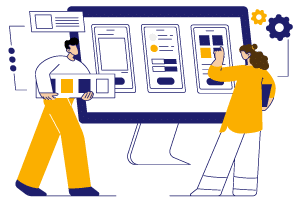
Standardization in Project Management: What Are the Benefits?
Standardization in project management can become a competitive advantage for companies seeking to improve efficiency and quality standards.
By establishing uniform procedures and practices, organizations can enhance collaboration, minimize human error, and accelerate project execution.
This article explores the five main benefits of adopting standards in project managemen Discover how this approach can positively transform operations and support sustainable growth.
Understanding Standardization in Project Management
Standardization in project management involves developing a framework and standard templates for the products or services you offer. These templates clearly outline best practices for managing projects within your organization. Each step of every process is defined so that all employees have a clear understanding of their responsibilities and aim for the same quality standards.
The concept is based on the idea that establishing clear, repeatable processes leads to greater efficiency, improved quality, and easier employee training and onboarding.
In project management, you can standardize documents and forms such as project charters, invoices, and more. By defining standards for tasks, documentation, and methodologies, companies can ensure consistency in project delivery, facilitate performance analysis, and promote continuous improvement.
In this way, standardization can play a key role in project success.
What Are the Goals of Standardization?
Companies that standardize their processes typically aim to:
- Improve processes
- Normalize workflows
- Increase performance
- Deliver consistent service
- Reduce management costs
- Improve internal communication

The Benefits of Standardizing Project Management Processes
Standardizing project management processes involves integrating best practices, clear guidelines, and proven management methodologies.
This approach not only harmonizes procedures across the organization but also maximizes project efficiency and quality. Let’s explore how these core principles can transform project management.
1. Universality and Accessibility
Standardized project management processes make workflows more universal and accessible across teams and departments. This leads to a shared understanding of both project goals and execution
By adopting a set of best practices and guidelines, project managers foster more effective and inclusive collaboration. The creation of reference documents also greatly simplifies onboarding, allowing new employees to integrate and contribute more quickly.
This approach ensures that all team members—regardless of department—understand and follow the same project management methodologies. It promotes consistency in execution and creates a more enriching work environment, improving employee satisfaction.
2. Improved Quality and Customer Satisfaction
Implementing high and consistent standards in project management plays a crucial role in improving project quality and client satisfaction.
By standardizing processes, organizations can ensure consistent quality in task execution and project delivery. It also helps minimize errors and significantly reduces the need for revisions.
This systematic approach ensures that every project meets the same high-quality criteria, leading to more reliable and satisfying outcomes for all stakeholders.
3. Increased Efficiency
Standardization enables the creation of templates that provide structure and eliminate uncertainty—boosting operational efficiency.
This results in shorter project timelines.
By streamlining processes, teams avoid wasting time figuring out how to approach each task, allowing for faster and smoother project progression. This efficiency also improves risk management and optimizes the use of resources and time.

4. Simplified Training and Onboarding
Standardization offers significant benefits for training and onboarding new employees, thanks to the consistency of practices and tools.
With clearly defined processes and methodologies, onboarding becomes more structured. New hires gain a better understanding of expectations and responsibilities from the start. This leads to a faster learning curve and reduces the time needed for new team members to become productive.
5. Analysis and Continuous Improvement
Standardization plays a key role in enabling consistent data collection—essential for in-depth analysis and continuous improvement of project processes.
This consistency allows project managers to effectively compare performance across different projects and identify optimization opportunities. As a result, organizations can engage in a cycle of evaluation and improvement, ensuring that best practices are not only identified but also systematically integrated to strengthen project management.
Facilitating Standardization with Project Management Software
Using tools like project management software is an effective way to achieve a high level of consistency in project execution.
These tools offer a variety of features designed to standardize processes, making it easier to apply the benefits of standardization—such as improved quality, increased efficiency, and better performance analysis.
By integrating clear work standards and proven methodologies, software solutions help create a consistent and optimized work environment, allowing teams to focus on achieving their goals with precision and efficiency.





